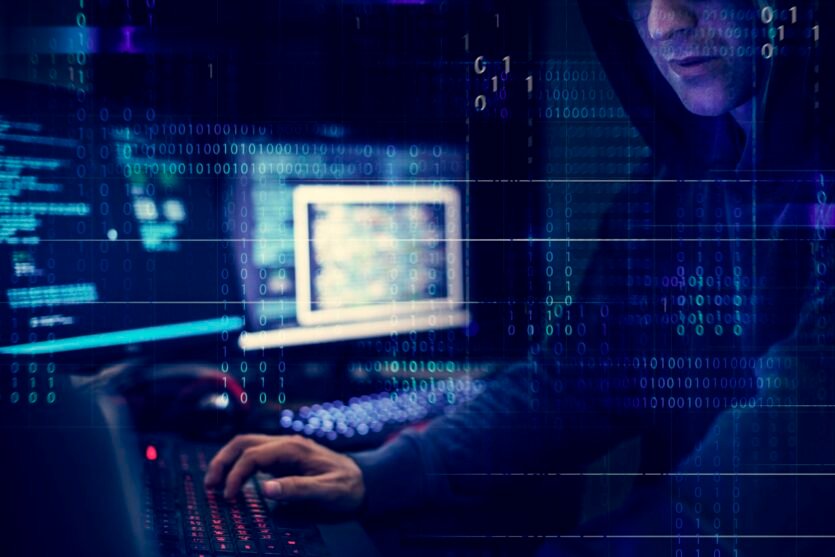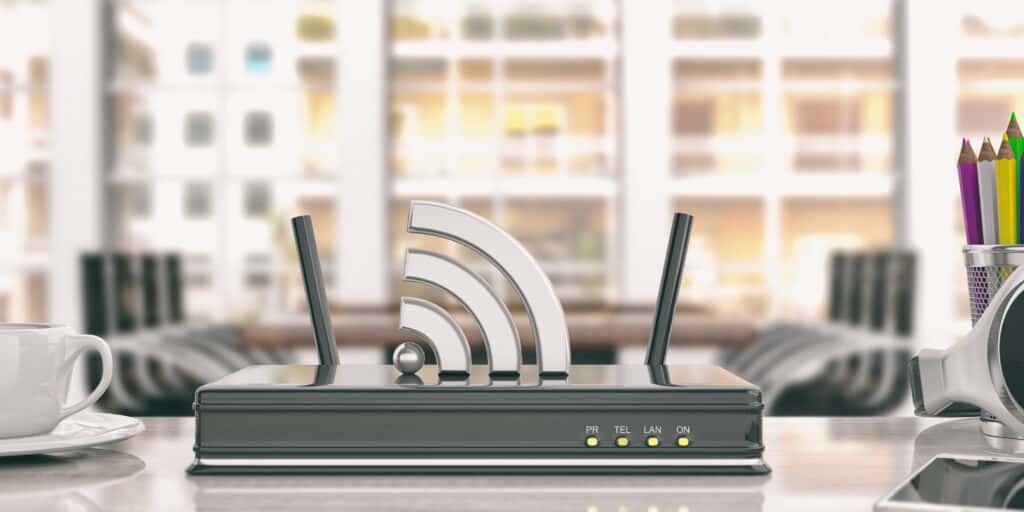Protect Yourself From the Dangers of Public WiFi

We may earn a small fee from the companies mentioned in this post.
Have you ever found yourself enjoying a cup of coffee at your favourite café while casually browsing the internet on their public WiFi? It might seem harmless, but the truth is, using public WiFi networks can expose you to numerous security risks. Fear not, in this blog post we’ll provide you with the knowledge and tools necessary to tackle the inherent dangers of public WiFi, enabling you to stay safe whilst connecting to the Internet.
From understanding the potential risks to implementing essential security measures, we’ll guide you through the process of protecting yourself from the dangers lurking in public WiFi hotspots. So the next time you’re sipping your latte and scrolling through your social media feed, you can do so with confidence and peace of mind.
Short Summary
Understand the risks of public WiFi networks and take necessary precautions to protect devices and data.
Utilise tools such as VPNs, two factor authentication, firewalls & antivirus protection for enhanced security.
Practice secure browsing habits to recognise and avoid threats on public WiFi networks.
Understanding Public WiFi Risks – Dangers of Public WiFi

Public WiFi networks are a convenient way to access the internet when you’re out and about. From coffee shops to airports, these free WiFi networks offer a quick and easy way to stay connected. However, using public WiFi exposes you to various security risks, including data theft, rogue access points, and malware infiltration. It’s crucial to understand these risks and take the necessary precautions to keep your devices and information safe when using a public WiFi connection.
Compared to your home WiFi network, which is often secured and protected by a password, public WiFi networks are more vulnerable to cyber threats. In public WiFi networks, the lack of security measures makes it easier for cybercriminals to intercept your data and compromise your device’s security. To stay safe online, it’s essential to be aware of the potential risks and adopt the right practices to mitigate them.
Checkout our informative article on what a cyber attack means
Cybercriminals and Data Theft
One of the most pressing concerns when using public WiFi is the risk of data theft. Cybercriminals often target these networks to steal sensitive information, such as login credentials for social media accounts and personal data. This could lead to identity theft, financial loss, and other serious consequences.
To protect yourself from data theft while using public WiFi, it’s vital to be cautious with the information you access and share. Refrain from logging into sensitive accounts, such as your online banking or shopping websites, as these could expose your financial information to potential attackers. Additionally, always verify the authenticity of a WiFi network before connecting to avoid falling victim to fake hotspots set up by hackers.
Rogue Access Points
Rogue access points, also known as “evil twins,” are fake WiFi networks set up by hackers to trick unsuspecting users into connecting and divulging their information. These malicious networks often have names similar to legitimate WiFi networks, making it difficult for users to distinguish between the two.
When connecting to a public WiFi network, it’s essential to verify the legitimacy of the network before connecting. Ask a staff member at the establishment for the correct network name and password, if applicable. Also, be wary of networks that do not require a password, as these may be rogue access points set up by hackers to steal sensitive data.
Malware Infiltration
Aside from data theft, another significant risk when using public WiFi networks is malware infiltration. Malware can easily be spread through these networks, infecting users’ devices and compromising their security. Attackers can exploit vulnerabilities in software and operating systems to inject malware onto devices connected to public WiFi networks.
To guard against malware threats, it’s crucial to keep your device’s operating system and software up-to-date with the latest security patches. Additionally, having a robust antivirus program installed on your device can help protect against malware infections and detect any suspicious activity on public WiFi networks.
Read our blog on how to prevent viruses on your computer
Essential Tips for Staying Safe on Public WiFi

Now that we’ve covered the risks associated with public WiFi networks, let’s delve into some essential tips for staying safe while using them. By verifying network authenticity, enabling firewall and antivirus protection, and practicing secure browsing habits, you can minimise the risks and enjoy a safer online experience on public WiFi networks.
Whether you’re working remotely at a coffee shop or catching up on social media at the airport, these tips will help you protect your devices and personal information from potential threats. So let’s explore these essential security measures in more detail.
Verify Network Authenticity

Before connecting to any public WiFi network, it’s crucial to confirm its legitimacy. Fake hotspots set up by hackers can appear as genuine networks, tricking users into connecting and exposing their information to potential threats. To confirm the authenticity of a public WiFi network, ask a staff member at the establishment for the correct network name and password, if applicable.
Be cautious of networks with suspicious names or those that don’t require a password, as they may be fake hotspots. Additionally, using a VPN (Virtual Private Network) can further enhance your security by encrypting your connection and hiding your online activity from potential attackers.
Check out our informative blog on the 7 types of cyber security threats
Enable Firewall and Antivirus Protection
Firewall and antivirus protection are essential security measures to safeguard your device from cyber threats while utilising public WiFi. A firewall serves as a barrier between your device and potential threats, blocking unauthorised access to your system. Meanwhile, antivirus software scans your device for any malicious software or viruses, helping to keep your device secure.
To ensure your device is protected when using public WiFi, enable your built-in firewall and keep your antivirus software up to date. This will help to guard against malware and other potential threats on public WiFi networks.
Use Secure Browsing Practices
When using public WiFi networks, it’s essential to practice secure browsing habits to protect your personal information and minimise security risks. Start by only accessing HTTPS websites, which provide an additional layer of security by encrypting the web traffic between your device and the website.
Additionally, avoid accessing sensitive information, such as banking or credit card information, while using public WiFi. Be cautious when clicking on links from unknown sources, as these may be phishing attempts or lead to malware-infected websites. Also, refrain from engaging in file sharing activities on public WiFi networks to protect your personal data.
By practicing secure browsing habits, you can reduce the risk of data theft and malware infections on public WiFi networks.
Checkout our informative arcticle on essential cyber security awareness training
Enhancing Security with VPNs and Other Tools

To further enhance your WiFi security on public WiFi networks, consider using additional tools such as VPNs, two-factor authentication, and proper password management. These tools can provide an extra layer of protection, making it more difficult for attackers to compromise your device and access your personal information.
In this section, we’ll explore the benefits of these tools and how they can help you stay safe on public WiFi networks.
Benefits of Using a VPN
A Virtual Private Network (VPN) is an essential tool for enhancing your security on public WiFi networks. VPNs create a secure, encrypted connection between your device and the internet, protecting your data from snooping and interception by cybercriminals.
By using a VPN, you can effectively shield your online activity from potential attackers, making it much more difficult for them to access your personal information. To maximise your security on public WiFi networks, consider using a reputable VPN service, and always enable it before connecting to a public network.
Two-Factor Authentication
Two-factor authentication is an additional security measure that requires a second factor to authenticate the user’s identity after their password has been entered. This provides an extra layer of security by requiring a second verification step when accessing your accounts, making it more difficult for attackers to gain unauthorised access.
To implement two-factor authentication, start by enabling it on your most sensitive accounts, such as your email, banking, and social media accounts. By doing so, you can add an extra layer of protection to your accounts and reduce the likelihood of unauthorised access when using public WiFi networks.
Password Management
Proper password management is crucial for maintaining your security on public WiFi networks. This involves using unique, strong passwords for each account and considering the use of a password manager to help keep track of them. By using strong passwords and a password manager, you can minimise the risk of password-related security breaches.
Password managers not only store your passwords securely, but can also generate strong passwords for you. By utilising a reputable password manager and maintaining unique, strong passwords for each of your accounts, you can ensure that your personal information remains secure even when using public WiFi networks.
Recognising and Avoiding Public WiFi Threats

Recognising and avoiding public WiFi threats is a vital part of staying safe when using these convenient networks. Being vigilant about spotting fake hotspots and identifying phishing attempts can help you protect your devices and personal information from potential risks.
In this section, we’ll discuss how to identify common public WiFi threats and how to avoid falling victim to them.
Spotting Fake Wi-Fi Hotspots
Fake Wi-Fi hotspots can be difficult to spot, but by being cautious and aware, you can protect yourself from connecting to these malicious networks. When connecting to a public WiFi network, always verify its legitimacy by asking a staff member at the establishment for the correct network name and password, if applicable.
When connecting to a network, it’s essential to access the network and sharing centre to manage your connections. Also, be wary of networks with suspicious names or those that don’t require a password, as they may be fake hotspots set up by hackers to steal sensitive data.
By being cautious and verifying the legitimacy of a WiFi network before connecting, you can help protect yourself from falling victim to fake free WiFi hotspots.
Identifying Phishing Attempts
Phishing attempts are a common threat when using public WiFi networks. Attackers may send emails or messages designed to trick you into revealing personal information or clicking on malicious links.
To identify and avoid phishing attempts, always be cautious when clicking on links or opening attachments from unknown sources. Double-check the sender’s email address and look for any inconsistencies or red flags, such as poor grammar or suspicious URLs.
By staying alert and using secure browsing practices, you can protect yourself from phishing attempts and other cyber threats on public WiFi networks.
Summary
In conclusion, using public WiFi networks can expose you to various security risks, but by understanding these risks and implementing the right practices and tools, you can stay safe while enjoying the convenience of public WiFi.
From verifying network authenticity and enabling firewall and antivirus protection to using VPNs, two-factor authentication, and proper password management, these essential tips will help you protect your devices and personal information from potential threats.
Remember, staying safe on public WiFi networks starts with vigilance and awareness. By following the guidelines and tips provided in this blog post, you can confidently use public WiFi networks without putting your security at risk.
Frequently Asked Questions
How do I stay safe on public WiFi?
To stay safe on public WiFi, create strong passwords and turn on two-factor authentication when available. Additionally, you should always use a VPN, stick to HTTPS websites, avoid accessing sensitive information, and keep your firewall enabled.
Taking these steps will help to protect you against cyberattacks and ensure that your data remains secure.
What can hackers see on public WiFi?
Using public WiFi can put you at risk of having your information stolen. Hackers can access your usernames, passwords, and other sensitive information simply by logging onto an unsecure network.
It’s important to be aware of the security risks associated with public WiFi in order to ensure your personal data remains safe in 2023.
Is public WiFi safe and secure?
Overall, public WiFi can be safe and secure as long as you take the necessary precautions to protect your information. By being aware of the potential risks and taking proactive steps to protect yourself while using public networks, you can reduce the chances of your data being exposed or accessed by a malicious actor.
This includes using a secure connection, avoiding public networks that require a login, and using a virtual private network (VPN) to encrypt your data. Additionally, it is important to be aware of the types of services that are available.
Is it unsafe to use hotel WiFi?
Using hotel WiFi can be unsafe as it is usually unprotected, meaning anyone within the range of the WiFi network can access your data without your knowledge. Security risks such as man-in-the-middle attacks and malware can be present if no security measures are taken.
To protect your information, make sure to only use secure, password protected WiFi networks when traveling.
External Reference Sites
- The National Cyber Security Centre (NCSC): This is a part of GCHQ. The NCSC acts as a bridge between industry and government, providing a unified source of advice, guidance and support on cyber security, including the management of cyber security incidents. It publishes advice and guidance on various cybersecurity topics.
- Get Safe Online: This is the UK’s leading source of unbiased, factual and easy-to-understand information on online safety. It provides practical advice on how to protect yourself, your computers and mobile devices, and your business against fraud, identity theft, viruses, and many other problems encountered online.
With over three decades of experience in the heart of London’s financial sector, I have dedicated my career to the pursuit of robust cybersecurity practices and IT leadership. As a Certified Information Systems Security Professional (CISSP), Certified Information Security Manager (CISM), Certified Chief Information Security Officer (C|CISO), Certified Ethical Hacker (CEH), and Computer Hacking Forensic Investigator (CHFI), I bring a wealth of knowledge and expertise to the table.
My journey in the field of cybersecurity has not only been about personal growth but also about sharing my insights with others. As an international speaker, I have had the privilege of addressing audiences worldwide, discussing the importance of cybersecurity in today’s digital age. My passion for knowledge sharing extends to my work as an author and blogger, where I delve into the complexities of cybersecurity, offering practical advice and thought leadership.
In my role as a CISO and Head of IT, I have overseen the development and implementation of comprehensive information security and IT strategies. My focus has always been on creating resilient systems capable of withstanding the evolving landscape of cyber threats.
My Master’s degree in Cybersecurity has provided a solid academic foundation, which, when combined with my practical experience, allows me to approach cybersecurity from a holistic perspective.
I am always open to connecting with other professionals in the field, sharing knowledge, and exploring new opportunities. Let’s secure the digital world together.

